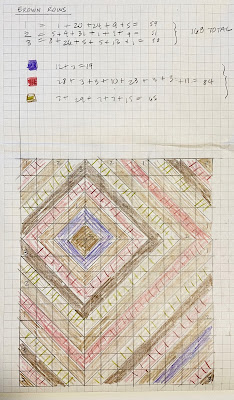This is a continuation of several posts about the making of the New York Beauty improv quilt. This post about the making of another one of the components, which ends up looking like floating rectangles.
I cut a black strip of fabric at 1" wide, and two strips of white fabric at 1-1/2" wide. They were sewn together into a strip set and pressed towards the center black strip.
I also cut a white strip at 3" wide.
The best way for me to describe my paper piecing is to show you the steps. All of these steps are after you have your freezer paper foundation ready to go.
Step 1. If all of the pieces are the same size and shape, just cut one template piece out of freezer paper and add 3/8" around all the outside edges. For this piece, all of the them were a different size. So, in this case, cut a template for each piece, number it and mark the left side.
Step 2. Pin the freezer paper template on the BACK of the fabric and cut out at least 3/8" around all the edges; even more if you are uncertain. Make sure that the LEFT side of the template is parallel to the left side of the fabric, and at least 3/8" away. Note: Every other piece is solid white.
Step 3. Place all of the templates/fabric pieces are in a pile with #1 on the top, and the left side on the left side.
Step 4. Pin the first piece in place, trim the seam to 1/4" and pick up the next piece and place it right sides together with the first piece, making sure that the LEFT side of the second piece is where you will be sewing the seam.
Step 5. Sew the seam. Trim if necessary.
Step 6. Press.
Step 7. Trim the excess fabric to 1/4". And repeat all the steps until all of the pieces have been sewn and pressed to the foundation paper. Make sure to alternate the pieced rectangles with the solid white background.
Finally, press the piece really well and trim the curved edges to 1/4" seam allowance.
Here is the final component.
And here it is in the block.
I hope you can use this technique somewhere in your quilting.





























































